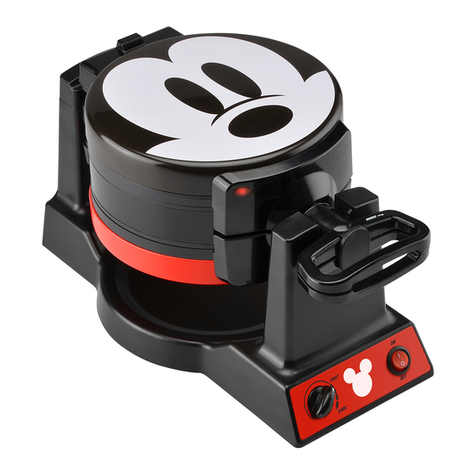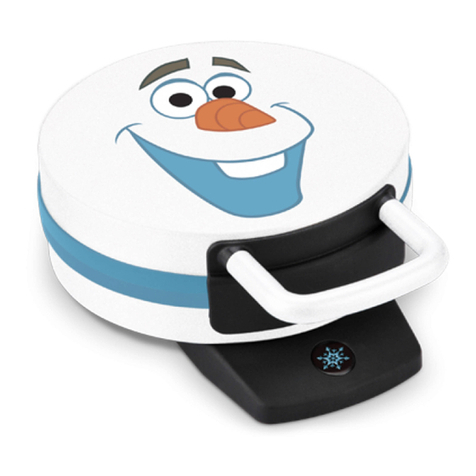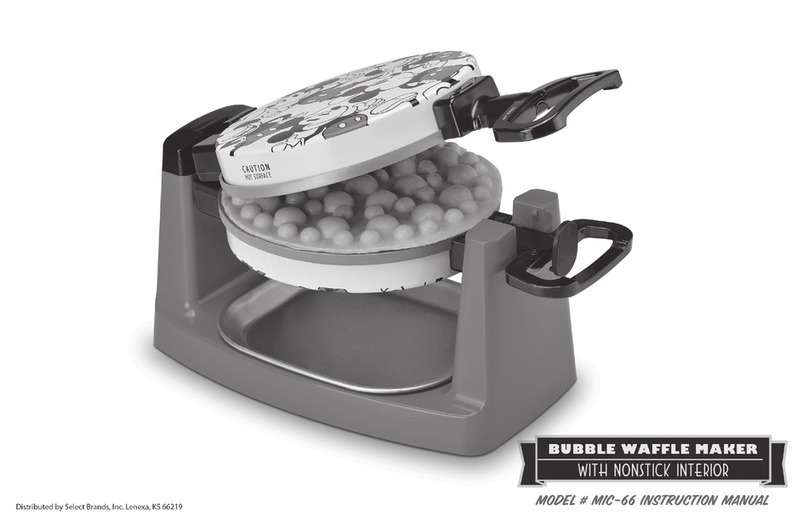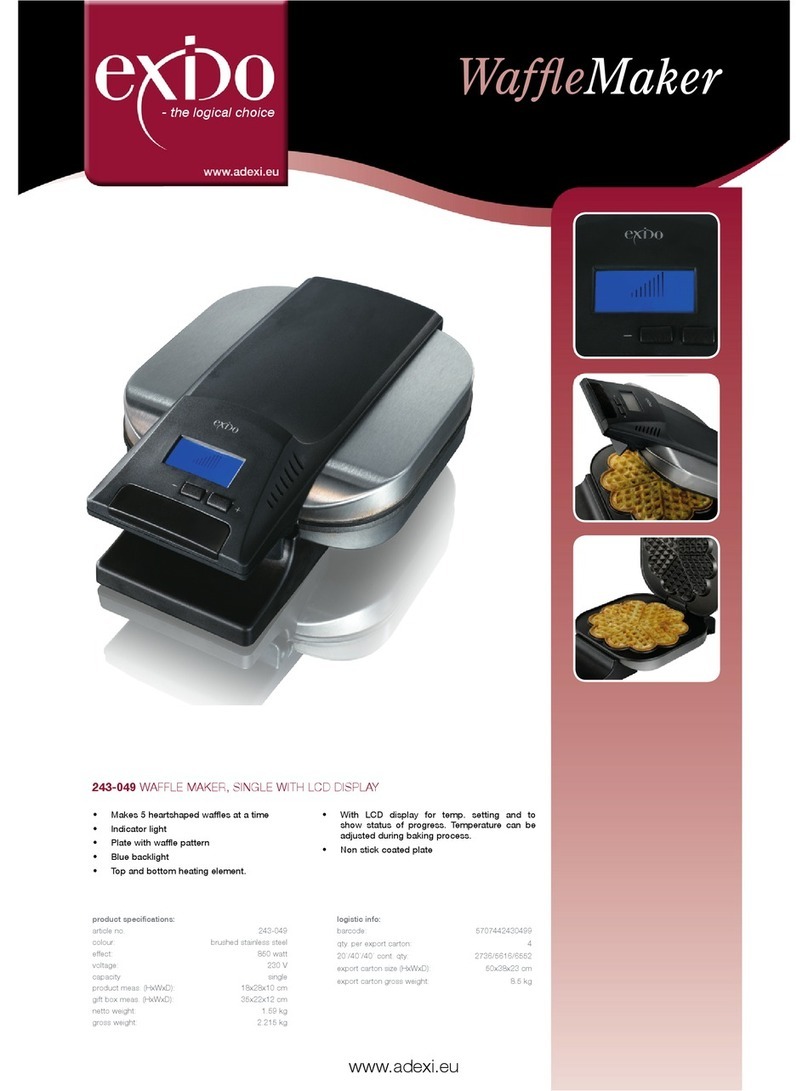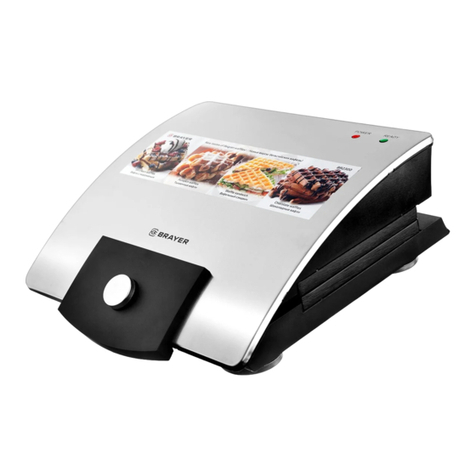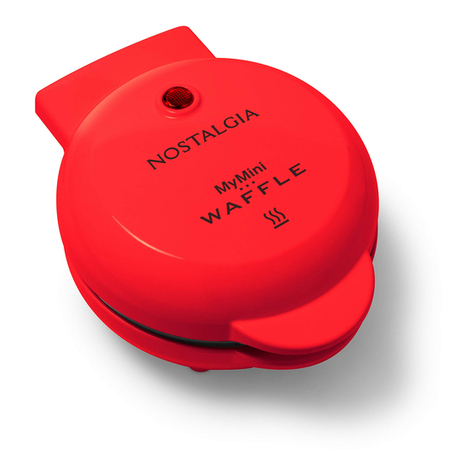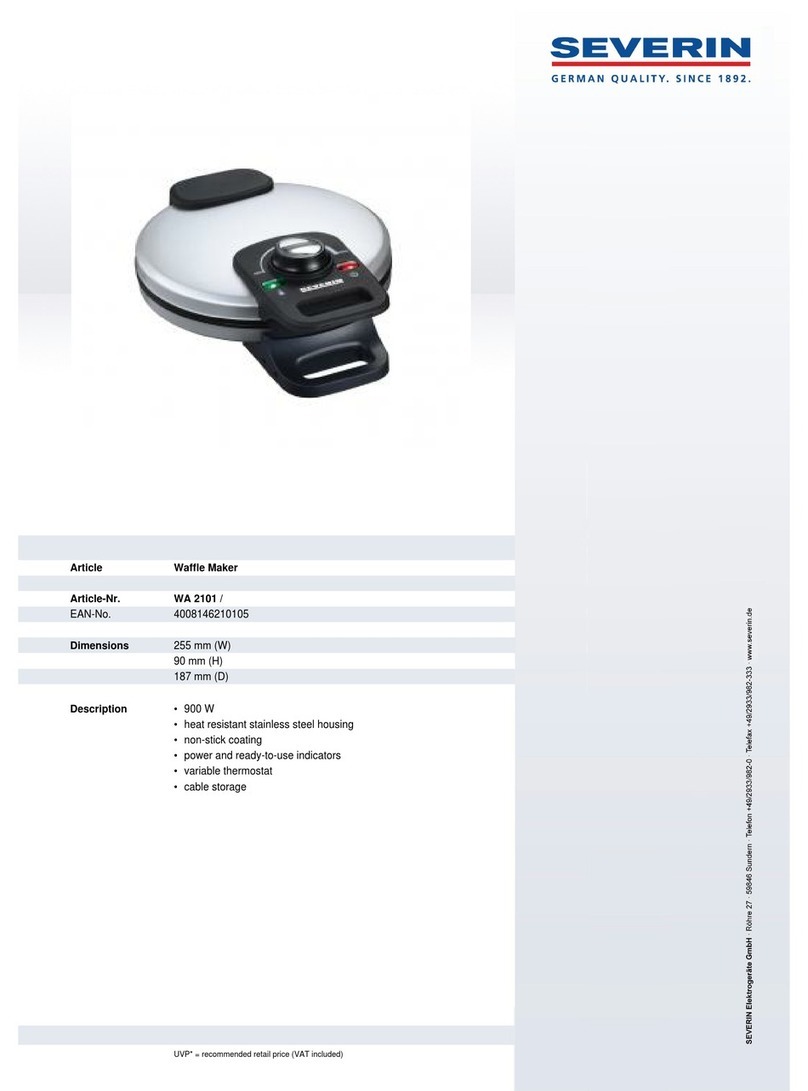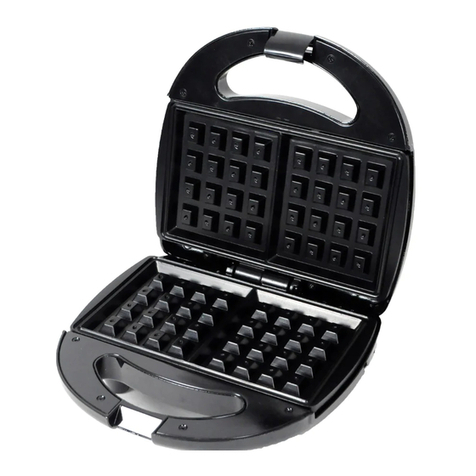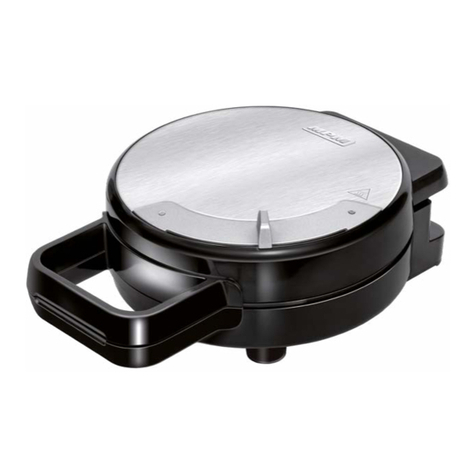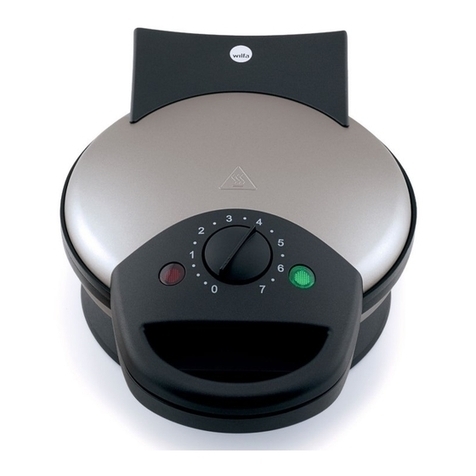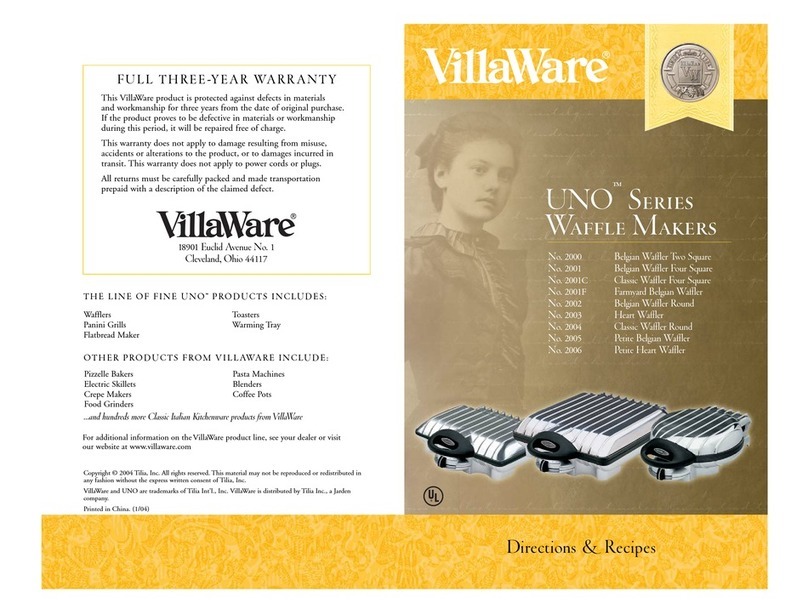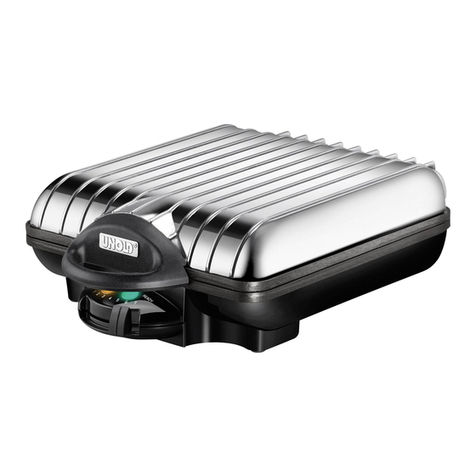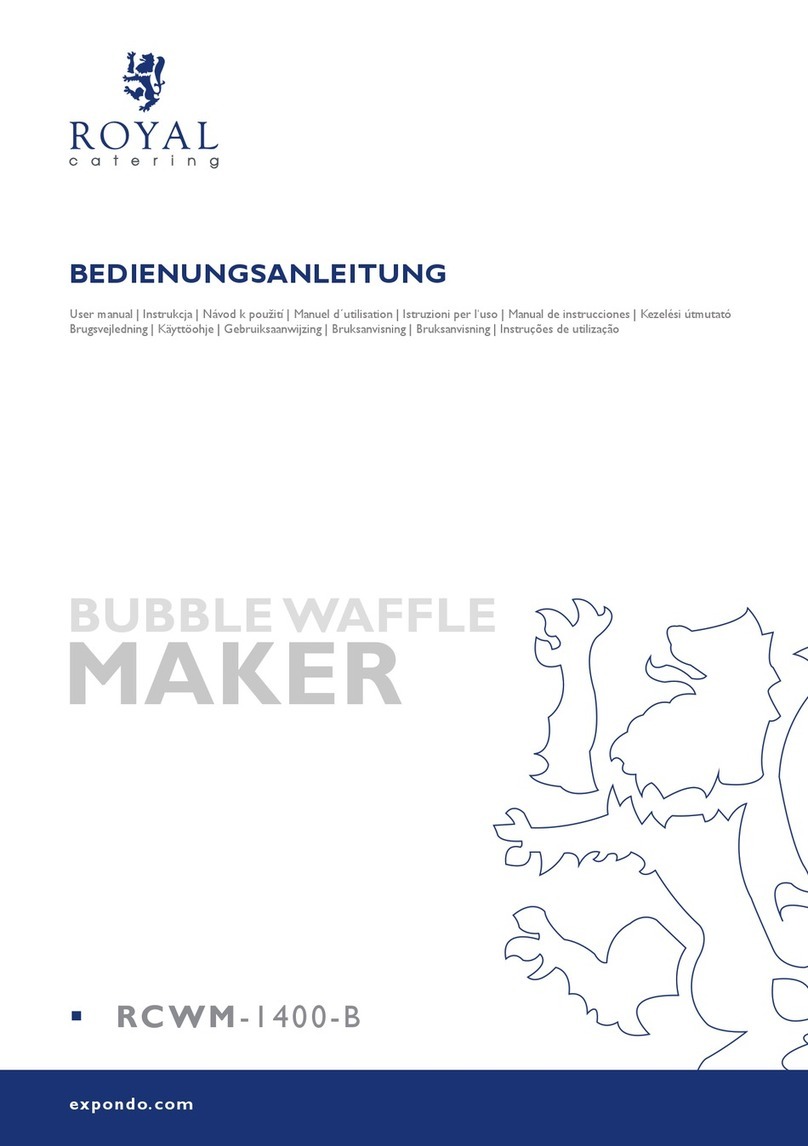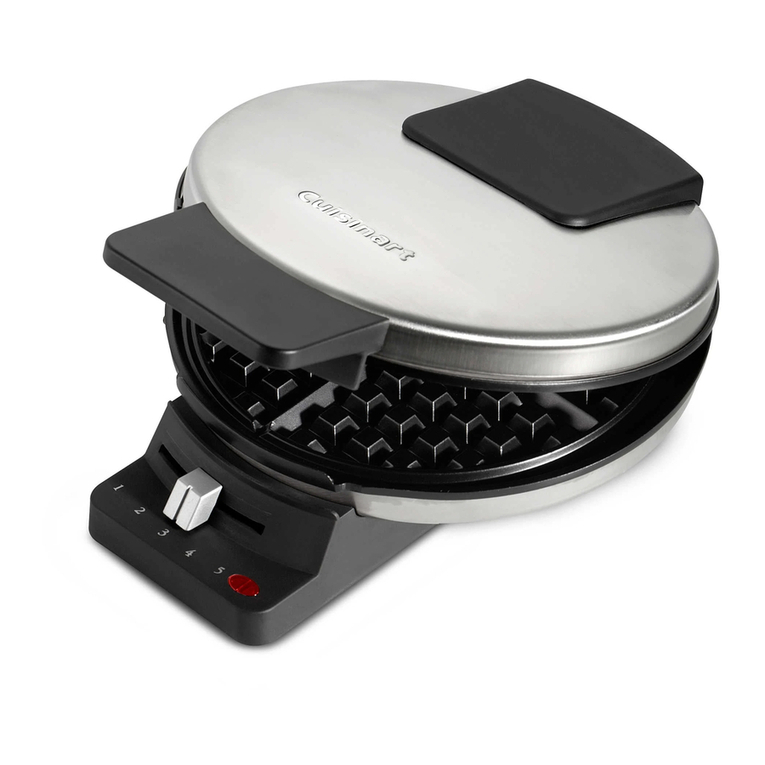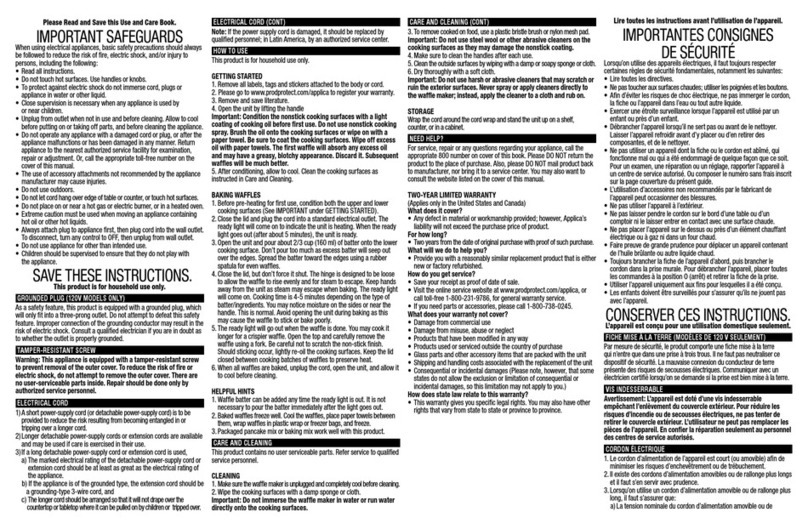Select Brands Wonder Woman DCW-300CN User manual


2
IMPORTANT SAFEGUARDS
When using electrical appliances especially when children are present, basic safety
precautions should always be followed to reduce the risk of re, electric shock, and/or
injury to persons, including the following:
1. READ ALL INSTRUCTIONS.
2. Do not touch hot surfaces. Use any handles or knobs. Parts become hot during use.
3. To protect against electrical shock, do not immerse cord, plug or appliance in water
or other liquid.
4. Close supervision is necessary when any appliance is used by or near children.
5. Do not leave appliance unattended while in use.
6. To disconnect remove plug from wall outlet.
7. Unplug from outlet when not in use and before cleaning. Allow to cool completely
before moving, putting on or taking off parts, or before cleaning.
8. Do not operate any appliance with a damaged cord or plug, or after the appliance
malfunctions or has been damaged in any manner. Return appliance to the nearest
authorized service facility for examination, repair or adjustment.
9. Extreme caution must be used when moving an appliance containing hot oil, food,
water or other hot liquids.
10. The use of accessory attachments not recommended by the appliance manufacturer
may result in injury.
11. Do not use outdoors.
12. Do not let cord hang over edge of table or counter, or touch hot surfaces.
13. Do not place on or near a hot gas or electric burner or in a heated oven.
14. Do not use the appliance for other than its intended use.
15. FOR HOUSEHOLD USE ONLY.
SAVE THESE INSTRUCTIONS

3
OPERATING INSTRUCTIONS
PRODUCT MAY VARY SLIGHTLY FROM ILLUSTRATIONS
This appliance is for HOUSEHOLD USE ONLY. It may be plugged into an AC electrical
outlet (ordinary household current). Do not use any other electrical outlet.
A short power supply cord is provided to reduce the hazards resulting from entanglement
or tripping over a longer cord. Extension cords are available and may be used if care is
exercised in their use. If an extension cord is used:
1. The marked electrical rating of the cord set or extension cord should be at least as
great as the electrical rating of the appliance, and
2. The cord should be arranged so that it will not drape over the countertop or tabletop
where it can be pulled on by children or tripped over unintentionally.
GROUNDING INSTRUCTIONS
This appliance must be grounded while in use to protect the operator from electrical shock.
The appliance is equipped with a 3-conductor cord and a 3-prong grounding-type plug to t
the proper grounding-type receptacle.
GROUNDING INSTRUCTIONS - US ONLY
The appliance has a plug that looks like Figure A. An adaptor, as shown in Figure B, should
be used for connecting a 3-prong grounding plug to a 2-ground receptacle. The grounding
tab, which extends from the adaptor, must be connected to a permanent ground such as a
properly grounded outlet box as shown in Figure C, using a metal screw.
Fig. A Fig. B Fig. C
Grounding Prong
Circuit grounding
conductor connected
properly
Metal Mounting
Screw
Cover Of Outlet
Box
Adaptor
• Power Light
• Rotating Hinge
• Non-skid Feet
• Easy-Grip Handle
• Nonstick Cooking Surface

4
LINE CORD SAFETY TIPS
1. Never pull or yank on cord or the appliance.
2. To insert plug, grasp it rmly and guide it into outlet.
3. To disconnect appliance, grasp plug and remove it from outlet.
4. Before each use, inspect the line cord for cuts and/or abrasion marks. If any are
found, this indicates that the appliance should be serviced and the line cord replaced.
5. Never wrap the cord tightly around the appliance, as this could place undue stress
on the cord where it enters the appliance and cause it to fray and break.
DO NOT OPERATE APPLIANCE IF THE LINE CORD SHOWS ANY DAMAGE, OR IF
APPLIANCE WORKS INTERMITTENTLY OR STOPS WORKING ENTIRELY.
IMPORTANT
During the rst few minutes of initial use, you may notice smoke and/or a slight odor.
This is normal and should quickly disappear. It will not recur after appliance has been
used a few more times.
BEFORE USING
1. Carefully unpack the pancake maker. Remove all packaging materials, including
those which may be inside the product.
2. Clean the interior and exterior surfaces of the pancake maker with a damp cloth or
sponge. Wipe dry with a soft cloth. NEVER IMMERSE THE PANCAKE MAKER OR
CORD IN WATER OR ANY OTHER LIQUID.
3. Position the pancake maker on a dry, level, heat-resistant surface.
4. It is recommended to operate this appliance on a separate outlet and circuit from
other appliances to avoid overloading the circuit.
HOW TO USE
1. Position the pancake maker on a dry, level, heat-resistant surface.
2. Lightly glaze both cooking plates with a small amount of vegetable oil or a non-stick
spray. Wipe off any excess oil.
3. Plug the power cord into a 120V outlet. A separate outlet is recommended to prevent
the circuit from being overloaded.
4. Lower the lid to the closed position and allow the pancake maker to preheat for a
minimum of 4-5 minutes. The red POWER light will be illuminated.
TIP: Prepare ingredients before the pancake maker is preheated.
5. Open the pancake maker using a pot holder to avoid making contact with hot
surfaces.
CAUTION: Surfaces of the pancake maker are hot. To avoid accidental
burns or contact with the hot surfaces or steam being released while
cooking, always open and close the lid of the pancake maker using an
oven mitt or pot holder.
6. Use the plastic scoop provided to slowly pour batter into the dished cooking plate.
CAUTION: Do not overll the cooking plate.
7. Before closing the pancake maker, allow the batter to begin to bubble. This will
vary based on the recipe. By allowing the batter to bubble, you can be sure that the
pancake has begun to solidify and batter will not leak onto the counter or tabletop.
8. Close the lid. Holding both sides of the handle, rotate the pancake maker around
the hinged base.
9. Open the pancake maker and allow the pancakes to nish cooking on the raised

5
cooking plate while you pour batter for the next pancakes into the dished cooking
plate.
10. Remove the pancakes from the heating plate with a plastic or nylon utensil. DO NOT
use metal utensils, as they will scratch the nonstick coating.
11. Allow pancakes to cool before enjoying.
12. Repeat steps 5 through 9 until you have the desired number of pancakes.
13. When nished cooking, remove plug from wall outlet and allow the appliance to cool
before moving, cleaning or storing.
CLEANING AND STORAGE
This appliance requires little maintenance. It contains no user-serviceable parts. Do not
attempt to repair it yourself. Any servicing that requires disassembly, other than cleaning,
must be performed by a qualied appliance repair technician.
1. Unplug the pancake maker and allow it to cool before cleaning.
2. Clean the interior and exterior surfaces of the pancake maker with a damp cloth or
sponge. Wipe dry with a soft cloth. NEVER IMMERSE THE PANCAKE MAKER OR
CORD IN WATER OR ANY OTHER LIQUID.
3. To remove batter baked onto the cooking surface, pour a small amount of cooking
oil onto the hardened batter. After 5 minutes, wipe with a paper towel or dry cloth.
4. NEVER USE ABRASIVE CLEANERS OR SCOURING PADS TO CLEAN THE
PANCAKE MAKER, AS THOSE MAY DAMAGE THE SURFACES.
TO STORE: Be sure all parts are clean and dry before storing. Store appliance in its
box or in a clean, dry place. Never store it while it is hot or wet. Never wrap cord tightly
around the appliance; keep it loosely coiled.
TO CLEAN SCOOP: The plastic batter scoop can be cleaned by hand with water and
mild soap and then towel dried. The scoop can also be cleaned in a dishwasher TOP
RACK ONLY.
PANCAKE MAKER HINTS AND SUGGESTIONS
• Do not overll the cooking plate. Approximately 1 scoop is the recommended
amount of pancake batter.
• Any leftover batter should store for several days in the refrigerator. If it gets a little
thick, revive it with some milk and ½ teaspoon baking powder for each cup of batter.
Don’t over stir. Remember, a few lumps in the batter is better.
• Cold batter may require a longer cooking time to reach the desired doneness.
• Serve pancakes on a warm plate. Keep extra pancakes warm in the oven.
• Add 1 or 2 tablespoons of milk or water to the egg mixture to get ufer omelets.
• To reduce fat and cholesterol, prepare omelets using egg whites only. Fresh eggs
work best, as the egg white and yolk will separate easier. Two egg whites are
equivalent to one whole egg.
• Eggs come in different sizes, but most recipes assume large eggs are being used.
Table of contents
Other Select Brands Waffle Maker manuals

